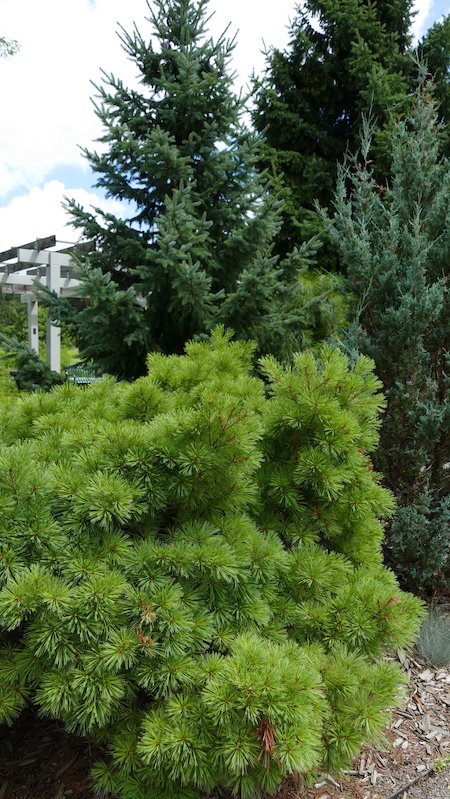150 Tips: Evergreens in the Landscape
After the last Ice Age, Minnesota was a land with vast expanses of pine tree forests, so it’s no surprise that homeowners and gardeners have always valued evergreens in the landscape. From its earliest days, MSHS has encouraged gardeners to plant evergreens.

Plant evergreens to block wind. M. Soholt, a nursery owner in Madison, MN, offered recommendations for creating a windbreak using evergreens in the landscape in the December 1918 issue of the Minnesota Horticulturist. Evergreen groves hold up well in a prairie landscape, he noted, where wind can be fierce. He recommended sourcing seedlings from a nearby nursery and to transplant the trees at least twice before their permanent placement. Mulch around the trees every year until they are 5 or 6 feet tall; Once they reach this height, the trees will be able to take care of themselves.
Keep in mind the mature size of evergreens before planting in your landscape. Thanks to a 1971 Extension article on evergreens in the landscape, we’re reminded that evergreens need space! Often, varieties are chosen that are actually too large for a site (especially in urban and suburban areas), or planted in dense masses that overpower other plants. Evergreens will thrive when given the space they need to grow into their natural form. Lacking space: Try some of these smaller arborvitae or other small-stature cultivars.
Prune out infected branches on evergreens to keep diseases and pests at bay. Many fungal diseases and pest issues can be treated if caught in time. Fled Glasoe explains in his December 2000 column that it’s crucial to keep a close eye on evergreen foliage and needle loss. Each tree has its own natural cycle of shedding needles, usually from the innermost section of the branch. However, if an entire branch experiences a sudden loss or foliage turns brown, these are both signs of a problem. Swift response is key towards protecting the tree and other evergreens nearby.
Don’t forget to add a hedge! In a recent issue of Northern Gardener®, Mary Meyer of the University of Minnesota recommended 11 hedge plants for northern gardeners. Hedges have many benefits. “Because they are densely planted and filled with leaves, hedges improve air quality, assist in carbon sequestration, mitigate noise, cool and insulate soil, reduce wind damage, capture rainfall and reduce runoff,” she says. “They also provide nesting and food for wildlife.”
Do you have a favorite evergreen?

